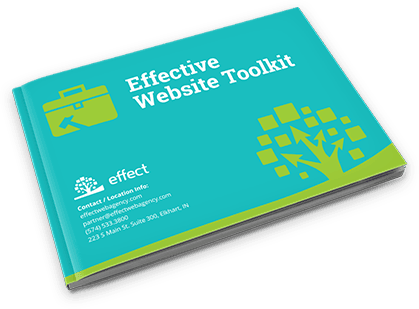Your website is often one of the first interactions potential customers have with your brand. Whether you’re looking to increase traffic, improve engagement, or boost conversions, an optimized and user-friendly website is the foundation of your online presence. Here are seven proven strategies to take your website to the next level!
1. Embrace White Space for Clarity and Focus
When visitors land on your site, they need to quickly understand your message without feeling overwhelmed. Overly cluttered pages can make it difficult for users to focus and find what they’re looking for.
White space—also known as negative space—is the empty space around design elements. Research shows that this emptiness can improve readability by up to 20%. To add white space on your site, try the following tips:
- To make key elements, such as headlines or calls to action, stand out, surround them with ample white space.
- Avoid crowding your pages with too much text or imagery. Create a clean and professional design that prioritizes simplicity.
Pro Tip: Have a friend or someone unfamiliar with your site navigate it. If the content feels overwhelming to them visually, look for opportunities to simplify.
2. Accelerate Your Website’s Load Time
Slow-loading websites turn users away. Studies reveal that 40% of visitors abandon a site that takes more than 3 seconds to load, leading to missed opportunities and lower search engine rankings. Improving your site’s load speed is an easy way to enhance user experience and boost SEO performance.
Here’s how to improve load times:
- Optimize images: Compress large image files without sacrificing quality using tools like TinyPNG or ImageOptim.
- Enable browser caching: Store static resources, such as images and stylesheets, locally in your visitors’ browsers.
- Minimize code: Remove unnecessary spaces, characters, or redundant code. Tools like Google PageSpeed Insights or GTmetrix can help identify problem areas.
Pro Tip: Run periodic speed tests to ensure your website performs well on all types of devices.
3. Guide Users with Clear and Compelling Calls to Action (CTAs)
A well-designed website encourages visitors to take specific actions, like signing up for a newsletter, scheduling a consultation, or making a purchase. However, without clear CTAs, visitors may leave your site without engaging with your brand.
To create effective CTAs:
- Use action-oriented language like “Download Your Free Guide,” “Start Your Free Trial,” or “Schedule a Demo Today.”These phrases persuade users to perform their desired actions.
- Make your CTAs visually distinct by using contrasting colors and placing them in prominent areas.
- Clearly communicate the benefit of taking action. For instance, instead of “Submit,” try “Get My Free Quote Now.”
Pro Tip: Use A/B testing to test different CTA designs and placements.
4. Enhance Navigation with Internal Linking
Internal links play an important role in your website. They guide users to relevant content, keep them engaged for longer, and help search engines better understand the structure of your site, improving SEO.
Use these strategies to improve your internal linking structure:
- Link to relevant blog posts or service pages naturally within your content. Use keywords as anchor text for these links.”
- Regularly audit your site to identify and fix broken links, ensuring a smooth user experience.
Pro Tip: Create cornerstone content—comprehensive, authoritative pieces on key topics—and link to them frequently to boost their SEO value.
5. Incorporate High-Quality, Relevant Images
Images can be powerful tools for engaging visitors and conveying your brand’s message. They make your content visually appealing and can help convey complex ideas faster. However, poorly chosen or low-quality images can detract from your website’s credibility.
For optimal results:
- Use high-resolution images that align with your brand identity. If possible, invest in custom photography or illustrations rather than relying solely on stock images.
- Optimize your images for web use by compressing file sizes and adding descriptive alt text for better accessibility and SEO.
- Incorporate images that complement your written content, such as infographics, product photos, or behind-the-scenes snapshots of your team.
Pro Tip: Use image carousels or galleries sparingly, as they can slow down your site if not optimized properly.
6. Produce Valuable, SEO-Optimized Content
Content is the backbone of your website and your SEO strategy. High-quality, relevant, and regularly updated content not only keeps your audience engaged but also signals to search engines that your website is authoritative and worth ranking.
To create impactful content:
- Research your audience’s needs and pain points. Use tools like AnswerThePublic or Google Trends to identify trending topics.
- Incorporate target keywords naturally within your content. Focus on long-tail keywords that align with user intent, such as “best plumbing services in [city]” instead of broad terms like “plumbing.”
- Produce a variety of content types, like blog posts, videos, FAQs, and more, to attract different types of visitors. Use a variety of content formats, including blog posts, videos, FAQs, and case studies, to appeal to different types of visitors.
Pro Tip: Regularly update older blog posts with fresh statistics and insights to keep them relevant and improve their search rankings.
7. Work with Digital Marketing Professionals
While you can tackle many website improvements on your own, working with experienced professionals can save time and ensure optimal results. A reputable digital marketing team can provide valuable insights, tools, and strategies tailored to your specific goals.
Here’s how they can help:
- Performing in-depth audits of your website to identify areas for improvement.
- Develop a comprehensive SEO strategy that aligns with your target audience and geographic market.
- Designing and implementing advanced solutions, such as conversion rate optimization or marketing automation.
Pro Tip: Choose a digital marketing agency with a proven track record and expertise in your industry for the best results.
Improving your website doesn’t have to be overwhelming. By using these seven strategies, you can create a user-friendly, visually appealing site that is optimized for search engines. Whether it’s refining your CTAs, enhancing navigation, or partnering with professionals, every step you take brings you closer to a high-performing website that drives results.
Remember, your website is often the first impression your business makes online—make it a lasting one.
Let Us Help You Succeed!
We can meet your SEO needs and help you rank higher in the Local Pack, organic search, and YouTube. Whatever your business goals, we will build an SEO strategy that reaches them. We do everything we can to work with our clients to make web design and online marketing affordable. Contact us for more information.




